The restart of museums that have reopened their doors to the public since May 18 has been positive: all over Italy, from north to south, people have shown an appetite for culture, a desire to reacquaint themselves with museums, to strengthen the link with the culture of the area. Of course, we should not expect the large numbers that museums had managed to touch before the Covid-19 coronavirus pandemic: moreover, we need to take into account the fact that, until June 3, since travel between regions is still prohibited, museums can only be visited by the public in the area. But everyone agrees that the signs are positive: the work done online by so many during the weeks of confinement has paid off, and many have approached the museums.
Among the very first ones that reopened their doors as early as May 18(our mega-calendar of reopenings, updated daily, can be found at this link) is the Museo Internazionale delle Ceramiche di Faenza (MIC), which has returned to welcome the public both in the permanent collection rooms and in those reserved for the temporary Picasso exhibition. The Challenge of Ceramics, for the occasion extended until June 2. “The MIC,” Claudia Casali, director of the Faenza-based institute, told us, “was the first museum in the province of Ravenna and the region to reopen to the public on Monday, May 18, a symbolic date since International Museum Day. Visitors slowly approached the museum spaces but the feedback was very positive. We received certificates of esteem and sympathy for the social work carried out during these months of closure but, above all, we were filled with joy by a sign left by an anonymous person at the entrance of the museum that read ’MIC WE MISSED YOU.’”
A double welcome, then: the museum returning to welcome visitors, and the latter responding with a surprising outpouring of affection. Claudia Casali is convinced that the work done while the museums were closed was essential to achieving this result. “Overall,” Casali concludes, “I judge positively the attendance and the relationships that have been established in this first week. The return to enjoying the beauty of the works directly and not via web/screen is crucial. Culture in general has responded well to the closure by offering a lot of fruition content. But it will be a slow and difficult journey for us museum operators, as we will have to re-accustom the visitor to seek and find the empathy of beauty, the dialogue with the works, the visit to our great heritage.”
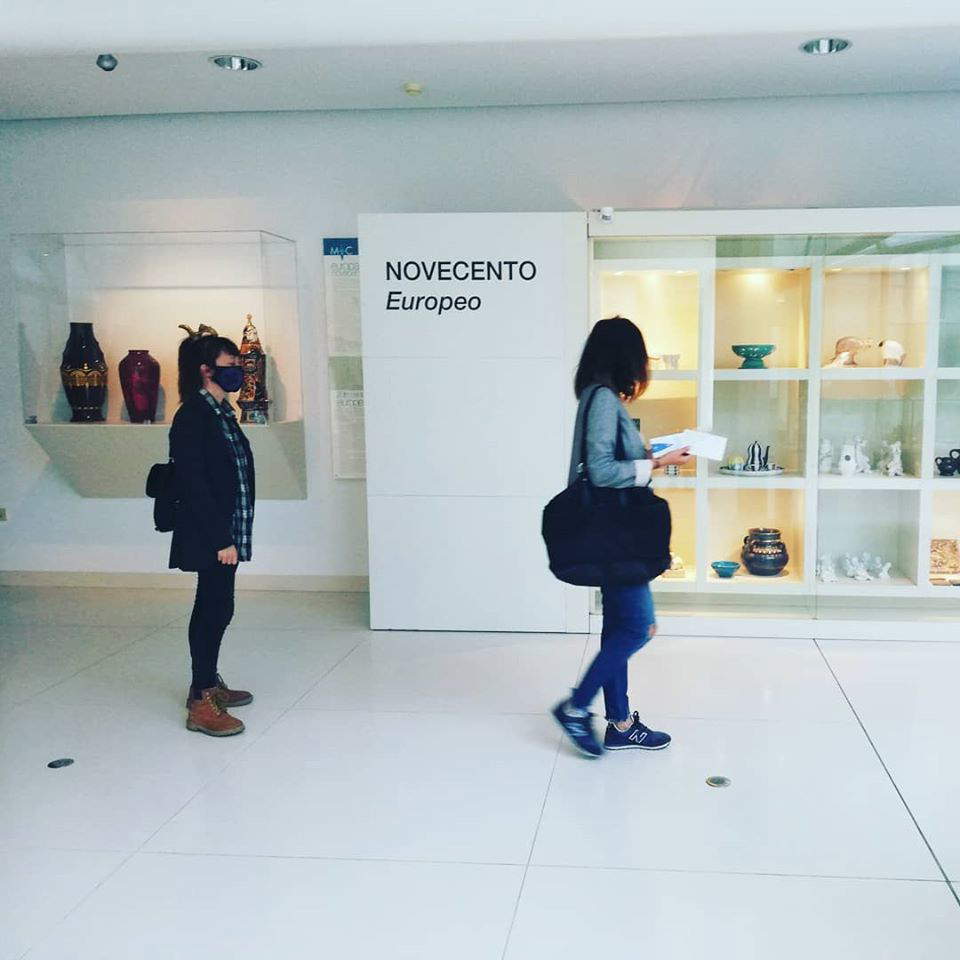 |
| Visitors to the MIC in Faenza on the day of the reopening |
In Emilia Romagna, one of the regions with the highest number of reopenings, Bologna’s civic museums have also reopened since the first week: the MAMbo, Museo Morandi, Museo Civico Archeologico, Museo Civico Medievale, Museo Davia Bargellini, Museo della Memoria di Ustica, Museo Internazionale della Musica, Museo del Risorgimento and Museo del Patrimonio Industriale are open again. “Since May 18,” Istituzione Bologna Musei President Roberto Grandi tells us, “Istituzione Bologna Musei has gradually reopened its exhibition venues to the public, with reduced hours and according to a progressive and staggered schedule over the first week. On the weekend of Saturday, May 23 and Sunday, May 24, the only days on which nine museums were open at the same time, the number of visitors recorded was 274. From the very beginning, the public was polite and cooperative, showing a sense of responsibility in complying with the new measures taken to ensure safe visitation.”
But that’s not all: despite the medical-health requirements that all museums have adopted to reopen safely while minimizing the risk of contagion (compulsory physical distancing, compulsory wearing of masks, restricted access), the public present was happy to return to the museums, in part because many cultural sites can be visited without running the risk of being in the midst of the crowd. “Generalized were the expressions of appreciation for the reopening of cultural venues and the possibility of visiting exhibitions and collections benefiting from optimal conditions of enjoyment, without the risk of crowding,” Grandi stressed. “In some cases, these favorable circumstances made it possible to make the visit even more pleasant and in-depth, thanks to the availability of museum operators present in the halls to answer questions and curiosities, with personalized attention to the individual visitor.”
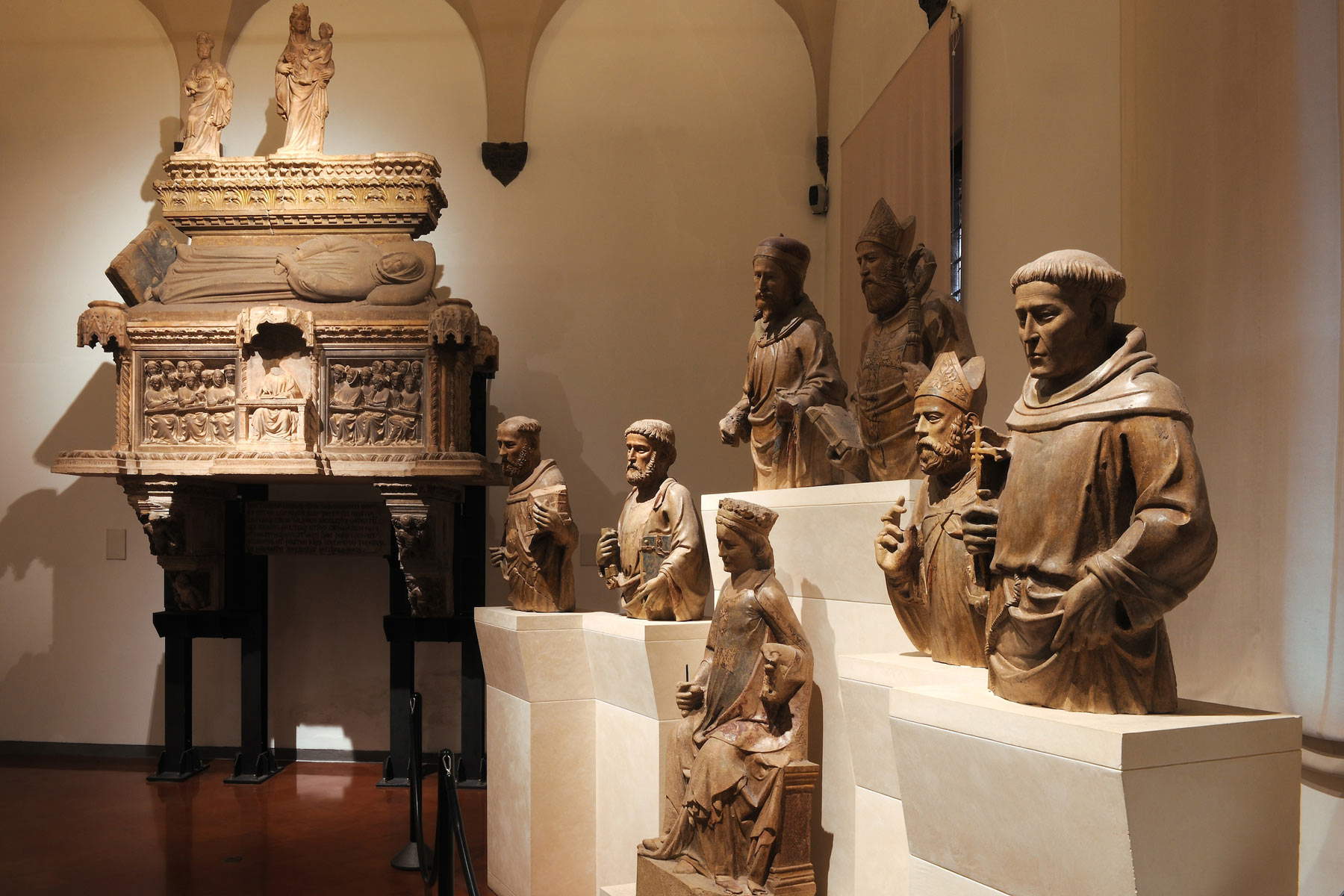 |
| The Museo Civico Medievale in Bologna. Ph. Credit Roberto Serra |
On the state museum front, Rome’s Galleria Borghese was among the forerunners, and the capital’s museum also registered positive feelings. We caught up with the director, Anna Coliva, who in the meantime recalled precisely that “the Galleria Borghese was among the first museums to reopen its doors to the public on Tuesday, May 19,” while pointing out that “it was not possible to make predictions about how the first day of reopening would go, and it was a pleasant and unexpected surprise to discover that the public responded enthusiastically to our challenge, confirming once again that the great effort made to reopen the Museum in total safety, after more than two months of closure, was right and due to a community that for the inevitable consequences due to the health emergency has been deprived of experience and cultural growth.”
The results on attendance were also good, and in general the public responded with great momentum, showing that they did not suffer much from the burden of medical-health regulations. According to Anna Coliva, what happened at the Borghese Gallery is proof that Italy has a great desire to return to cultural venues. “On the first day,” says the director, “100 people came to the museum, and in the days that followed there was a steady increase. During the first weekend we recorded sold out. Visitors were thrilled to walk through the rooms of the Museum in a pleasantly flowing atmosphere, which has not been the case for years because of the huge tourist flows, especially foreigners, to which the Borghese Gallery was accustomed before its closure. Even great misfortunes are harbingers of opportunity. The reappropriation by Italians, and especially Romans, of the city’s most representative museum is an unexpected benefit that the pandemic has left us.”
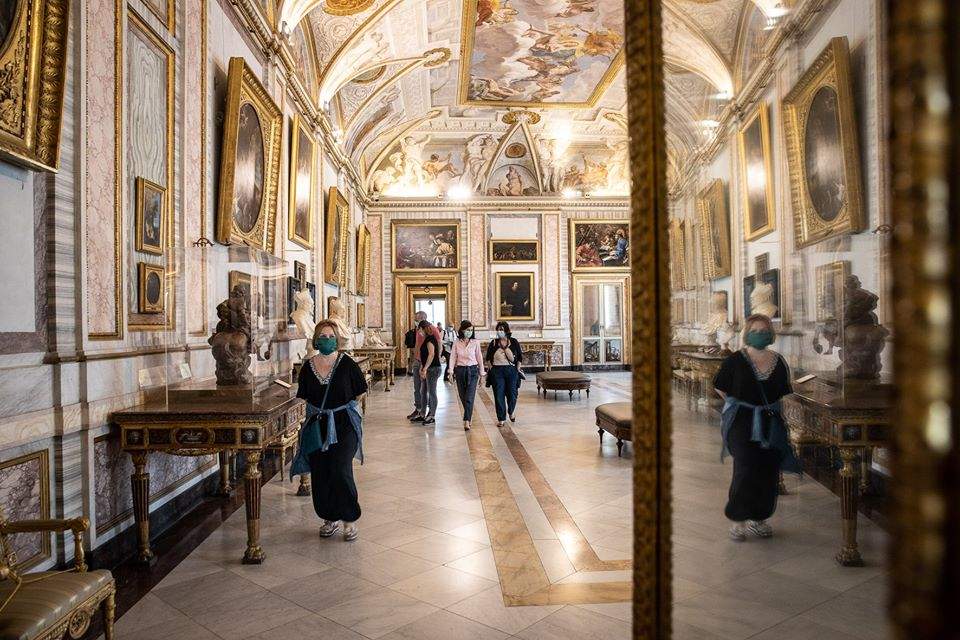 |
| Visitors to the Borghese Gallery on the first day of reopening |
From Rome to Florence, one place of culture that received a response that went perhaps even beyond the best expectations was the Boboli Gardens, the first of the Uffizi pole to reopen to the public last May 21(Palazzo Pitti reopened instead on May 28, while the Uffizi Gallery will return to being walked by visitors on Wednesday, June 3). Compounded by the fact that it is a pleasant, open-air venue much loved by Florentines, the response has been remarkable.
“In these first days after the reopening of the Boboli Gardens,” said the director of the Uffizi Galleries, Eike D. Schmidt, “we have hosted more than two thousand one hundred visitors, of whom about seven hundred, so one-third, Florentine residents, and two-thirds from all over Tuscany: this shows that the double objective of reconnecting citizens with their history, with their treasures, and of fostering local tourism, is fully working. The recovery also manifests itself in the great desire to reappropriate the natural and artistic beauty that our territory offers in abundance. The Uffizi Galleries are enthusiastically responding to this need.”
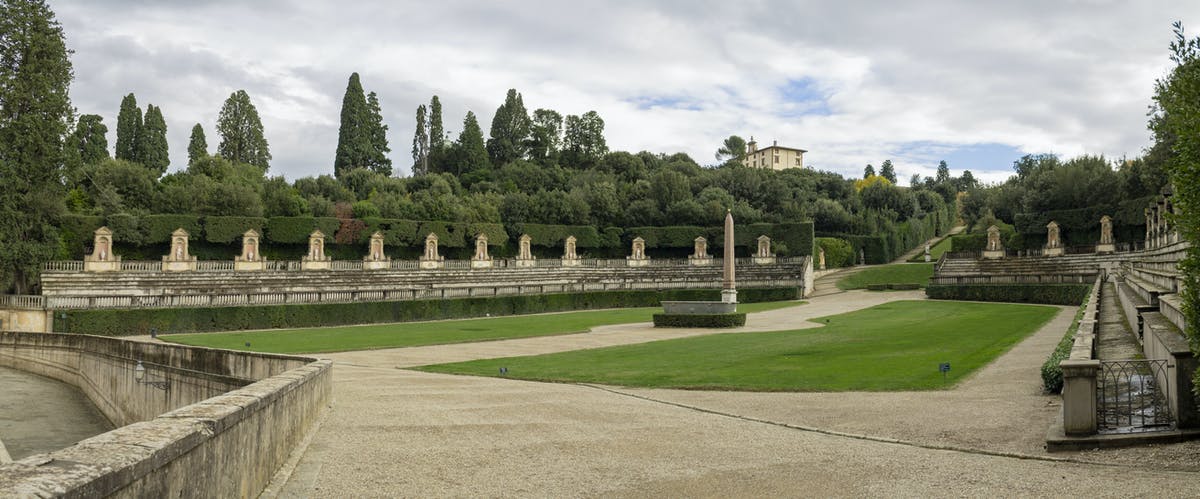 |
| The Boboli Gardens |
The journey continues south to the Archaeological Park of Paestum and Velia, also among the first state-owned cultural sites to reopen, since as early as May 18 visitors could return to the archaeological area, one of the most visited in the South. We heard from Maria Boffa and Rossella Anna Tedesco of the press office: “The Archaeological Park of Paestum and Velia,” they told us, “reopened to the public last May 18, guaranteeing a safe visit without compromising the cultural offer. Among the measures taken: quotaed entrances, obligatory itineraries with visits by time slots, updating of the PaestumApp to monitor flows, thermoscanners, compulsory visits with a mask, dispensers with disinfectant gel, and a preference for online purchases and contactless payments.”
Again, numbers far from those of the past (they are at least twenty times lower than under the normal regime), but the results bode well for the coming months because enthusiasm from the public has also been registered in Paestum. “In the first week of opening,” say Boffa and Tedesco, “the Paestum site recorded 537 admissions; while the archaeological area of Velia welcomed 36 visitors. The public response was more than positive: the possibility of spending a day among history, archaeology and landscape was the strongest motivation behind the visit. The Park’s inclusive and accessible cultural offerings especially enticed families to visit the two archaeological sites seeking relaxation, recreation, culture, discovery and learning. Positive also limpression on the management of the Covid-19 emergency, deeming the spaces safe and comfortable enough to entice stay and participation.”
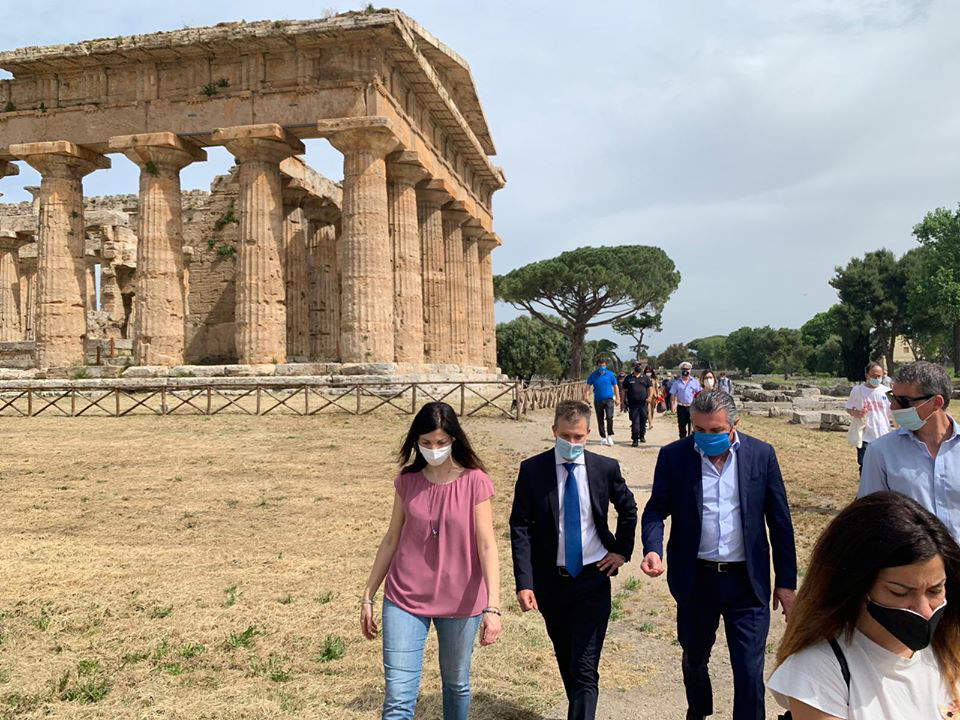 |
| Inauguration of the reopening at Paestum: second from left (blue tie) is director Gabriel Zuchtriegel |
Finally, we wanted to ascertain the situation in one of the cities symbolic of the epidemic, Brescia: in fact, the Lombardy province is currently the third in Italy in terms of absolute number of infections (after Milan and Turin) and the fifth in terms of cases in relation to population (after Cremona, Piacenza, Lodi and Bergamo). And even in Brescia, despite being one of the hardest hit cities, visitors have returned to take back their museums, with numbers that make it possible to look positively to the future.
We caught up with the director of Fondazione Brescia Musei, Stefano Karadjov, to get his impressions of the reopening of the city’s first museums. “The Pinacoteca Tosio Martinengo and the Santa Giulia Museum,” said the director, “reopened on Thursday, May 21, with new evening hours on weekdays and with an extension on holidays into the evening hours with the aim of responding to a demand for the moment that is purely territorial, in the absence of tourism and school audiences. The new access modalities depend on the needs to control spacing and on criteria related to the new economic sustainability of the openings and provide for reservations and spaced entry every 45 minutes for a number of 15 users per visit. Visits have been constructed according to lottimal walkability of spaces in relation to museum highlights, and support staff have been trained to provide instruction and information about the rooms.”
The opening in the evening was received very positively, and with great public participation, a sign that this point will need to be discussed at length in the coming weeks, because it is an additional possibility for citizens, and also a security measure, since extending the hours means diluting the concentration of the public. Finally, the public in Brescia has also responded fervently to the opening. “The approximately 160 visitors on the first evening and 120 on the second,” says Karadjov, “suggest the goodness of the evening choice. Lutenza has positively commented on the training of the operators, confirming that the accompanying mode helps to improve fruition and ensure a stress-free experience in line with the needs of the public in this historical phase.”
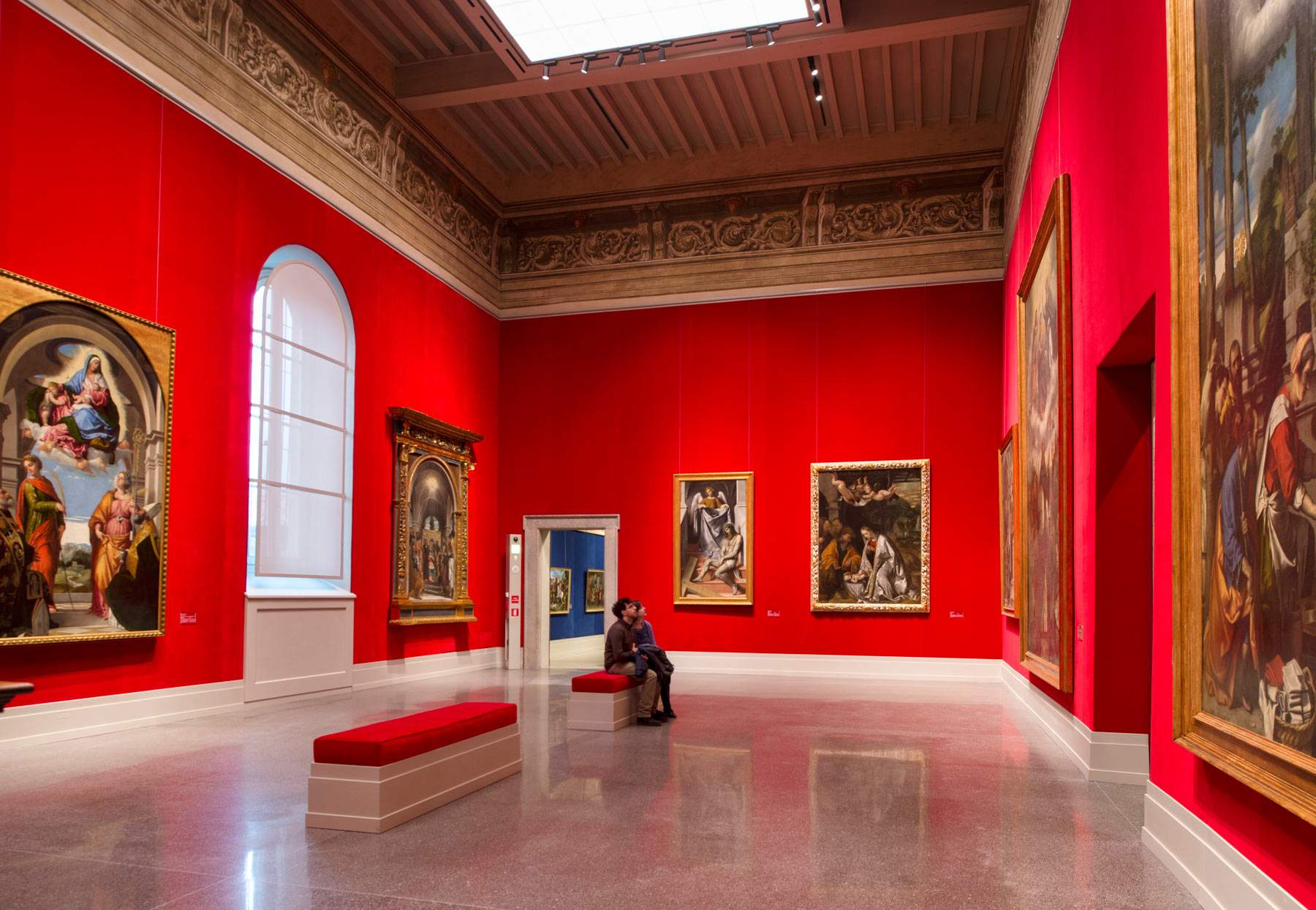 |
| The Tosio Martinengo Picture Gallery in Brescia |
In conclusion, it should be reiterated that the restart of museums has taken place under the banner of total safety: the message that the directors of institutes throughout Italy are trying to get across is that museums are safe places, that they can be visited with peace of mind because at this stage they are not crowded, because strict protocols have been issued that everyone is adhering to, because environments are sanitized and sanitized everywhere and precise and scrupulous medical and health regulations are followed in all museums, and because the staff is attentive and vigilant so that everyone can be safe.
And of all this the public has noticed: ratings are good everywhere, the directors assure. Visitors know that the risks are low in the museums, that they are places that had been missed, and that they will provide an important base from which to revive a stricken but ready to rise again.
Warning: the translation into English of the original Italian article was created using automatic tools. We undertake to review all articles, but we do not guarantee the total absence of inaccuracies in the translation due to the program. You can find the original by clicking on the ITA button. If you find any mistake,please contact us.